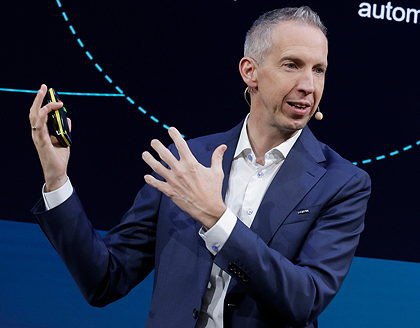Rainer Brehm, CEO of Siemens’ Factory Automation division, unveiled the latest version (v19) of the company’s Totally Integrated Automation (TIA) Portal, with the claim that it offers “the simplest motion engineering on the market”, avoiding the need for complicated lists. In delta robot pick-and-place applications, for example, users will be able to see how the system will operate using a digital twin before any hardware is ordered or configured.
The Portal is said to be intuitive for non-experts and new users to use, and Brehm argues that this is crucial for industrial users. To manage an increasing variety of products flexibly, and to cope with the shortage of skilled workers, more processes will need to be automated – and this means that machines and systems, and the resulting demands on motion control and automation technology, are becoming increasingly complex.
The new version of TIA Portal integrates motion control from initial engineering through to the eventual commissioning and operation of the drives. Whether users want to control a single axis or complex kinematics, the Portal provides support with graphical interfaces and extensive diagnostics. It also offers extended functions, including software that helps with modularisation, and allows users to write complex applications.
The modular design makes it easy to deploy, track, trace and re-use applications, and to create versions. A new function called Named Values can be used to create readable, easy-to-maintain code, and for debugging.
Another new element in the Portal, called Simatic Motion Interpreter, avoids the need for in-depth programming knowledge. It acts more like a navigation system, with the user entering a simple sequential description of the movements that they want to perform. The Interpreter then takes over the programming, from single axes to complex kinematics with up to six interpolating axes. Changes can be made to applications without needing to delve into PLC code.

Siemens’ Factory Automation CEO Rainer Brehm: simpler motion engineering is needed to tackle the skills crisis
Brehm also announced a new generation of drives including:
• the economical, space-saving Sinamics G220 drive, which is said to produce 95% less harmonic distortion, avoids the need for input or output filters, works with IE4 or IE5 motors, and is designed to connect to the edge and the cloud;
• the Sinamics S200 for standard servodrive applications, which is easy to engineer via TIA Portal; and
• the Sinamics S210, which supports safety functions up to SIL3.
All of these drives can be tested virtually using digital twins in Siemens’ Sinamics DriveSim Basic and Advanced tools.
Siemens: Twitter LinkedIn Facebook

